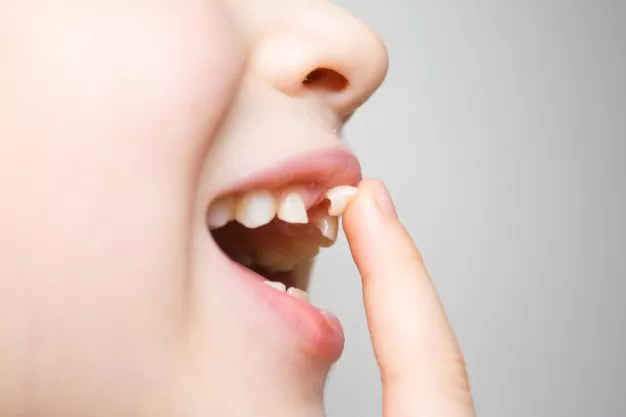Dealing with Loose Teeth: Safe and Gentle Removal Techniques for Kids
A wobbly tooth in a child can be an exciting sign of their growing up. However, it can also lead to a lot of wiggling, poking, and the urge to get it out as quickly as possible. While the natural course of action is for the loose tooth to fall out on its own, there might be situations where a gentle assist is needed. This article explores safe and painless methods for removing a loose tooth in a child, highlights when to seek professional help, and offers tips for managing the process to ensure a positive experience.
Why Patience is Key: The Natural Process of Tooth Loss
The human body has a remarkable way of shedding baby teeth to make way for permanent ones. As the permanent tooth develops beneath the gum line, the root of the baby tooth gradually dissolves, causing it to loosen and eventually fall out. This natural process allows for proper development of the jawbone and ensures the permanent tooth erupts in the correct position.
Safe and Gentle Removal Techniques: When Natural Loss Needs a Nudge
In some cases, a loose tooth might persist for an extended period, causing discomfort or interfering with eating. Here are some gentle methods for aiding removal, but only if the tooth is very loose and ready to come out naturally:
- The Wiggle Test: Encourage your child to gently wiggle the tooth back and forth with their tongue or clean fingers. This natural movement can help loosen the remaining attachment and encourage the tooth to fall out on its own.
- The Gauze Grab: If the tooth is very loose and causing significant discomfort, you can try using a piece of sterile gauze to gently grasp the tooth and give it a slight twist. Be very gentle and avoid pulling or forcing the tooth out.
- The Food Approach: Certain crunchy foods like apples or carrots can sometimes help loosen the tooth naturally as your child chews. However, supervise your child closely to prevent choking and ensure the tooth is truly ready to come out.
Important Note: Never yank or pull on a loose tooth. This can damage the developing permanent tooth underneath and cause bleeding or discomfort.
When to Seek Professional Help: Signs It’s Time for the Dentist
While assisting with a very loose tooth might be okay at home, there are situations where seeking professional help from a dentist is crucial:
- Excessive Bleeding: If there’s significant bleeding after the tooth comes out, consult your dentist to ensure proper clotting and healing.
- Pain or Swelling: If your child experiences persistent pain, swelling, or redness around the loose tooth, it could indicate an infection or other complication requiring professional attention.
- Difficulty Removing the Tooth: If the tooth is loose but firmly stuck and you’re unable to remove it gently at home, a dentist can safely extract it to avoid damaging surrounding teeth or tissues.
- Broken or Fractured Tooth: If the loose tooth is broken or fractured, consult your dentist to determine the best course of action and ensure no root fragments remain.
Making Tooth Loss a Positive Experience: Tips for Parents
Here are some tips for making tooth loss a positive experience for your child:
- Explain the Process: Talk to your child about what’s happening and explain the natural process of tooth loss.
- Offer Reassurance: Let your child know it’s normal to feel some wiggling and discomfort, but assure them the tooth will fall out soon.
- Celebrate the Milestone: Make tooth loss a fun event! Use a cute tooth fairy box or create a tooth fairy tradition to add excitement.
- Practice Good Oral Hygiene: Encourage your child to maintain good brushing and flossing habits to keep their new smile healthy.
Frequently Asked Questions (FAQ) About Loose Teeth in Children
Q: How long do loose teeth typically take to fall out?
A: The timeframe for a loose tooth to fall out can vary. It can happen within a few days or take a couple of weeks.
Q: Is it okay for my child to play with their loose tooth?
A: Gentle wiggling with their tongue or finger is okay. However, discourage excessive playing or poking, as it can irritate the gums.
Q: What if my child accidentally swallows their loose tooth?
A: Don’t panic! Swallowed baby teeth typically pass through the digestive system without any problems. However, if your child experiences any discomfort or you have concerns, consult your doctor.
Q: What happens if my child’s loose tooth seems stuck?
A: If the tooth is very loose but stuck and causing discomfort, it’s best to consult your dentist for safe removal.
By understanding the natural process of tooth loss, using gentle methods for assisted removal only when necessary, and knowing when to seek professional help, you can ensure your child’s loose tooth experience is positive.

